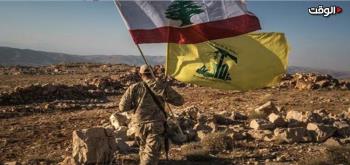Alwaght- More than 10 years after the start of Syrian crisis, the country is heading towards the end of the critical conditions. In the new situation, it seems that a new procedure, characterized by diplomacy and soft power, is being implemented to restore the central government's control over different parts of the country, contrary to the previous procedure, which was based on the use of force and hard-won victories. As part of this, a new round of peace talks has begun in Al-Mayadin District in Deir ez-Zor province and is spreading to other cities and towns.
The new process of reconciliation is taking place as the army forces entered the town of Al-Yadod in the southern province of Daraa on September 13 together with the Russian military police forces. The army entry followed Russian-mediated talks between central government and the tribal leaders in the town that led to an agreement according to which the armed groups hand over their arms to the army and the town's control is given to the government.
The process, which can be called the bloodless advances for transition to peace, marks a new stage in the Arab country's developments after 2011. The defining element of this process is approval of the government legitimacy by the citizens. President Bashar al-Assad's amnesty worked like a driving force for the bloodless peace.
Al-Assad's amnesty, a gate to national reconciliation
The new phase of the reconciliation process in Syria is essentially a direct result of the amnesty issued by President al-Assad on May 2. About seven months ago, the Syrian leader issued a general amnesty order for those convicted in criminal cases. The order covered offenses such as "damaging the authority of the government" or "desertion of military duty" provided that the fugitive person returns within the three to six months from the issuance of the amnesty. The decree also included crimes under the terrorism law, including "conspiracy to commit a terrorist act" and "dealing with currency other than the Syrian pound" on the condition that compensation be paid to the central bank.
Although the decree did not include individuals affiliated with the Muslim Brotherhood or the Israeli regime, the bloodless peace process has been widely welcomed by Syrian citizens. In Al-Mayadin, for example, the wanted civilians and army fugitives made it to the special stations dedicated to address their cases and benefited from the amnesty for a return to their normal life.
Also, the elders and prominent figures in Al-Mayadin told the official Syrian Arab News Agency (SANA) that the reconciliation process is a "real opportunity for all those whose hands were stained with the blood of their compatriots" to reembrace their society and country unconditionally through the path provided by the Syrian leader.
Citizens reembrace central government
In the early months and years of the crisis, a significant number of Syrian citizens, influenced by heavy propaganda of Western and Arab media, joined foreign-backed terrorist groups. At first, they thought that these radical groups could create an utopian state under their own governance. But now, realizing the true nature of them, the citizens, tired of insecurity and terrorist acts, are gradually heading back to the central government-provided security cover.
Reconciliation initiatives in the past few months bear example to this reality. First initiative started from Daraa, the cradle of the anti-government rebellion that unfolded to become a full-scale war between Damascus and foreign-sponsored terrorist factions. Following a two-stage agreement, the terrorist militants surrendered to the government and civilians returned home as the army regained control of the city.
Following the deployment of the army in the Daraa city on September 6, many people hailed the army as terrorists left their positions. Now Deir ez-Zor has become the heart of the reconciliation between the nation and the government.
Influence of the new version of bloodless peace
Here are the influences of amnesty-driven bloodless peace:
First, this process demonstrates a big turn in the Syrian equations. Frustrated with their Arab and Western backers and unable to fight the central government's power, the terrorists in southern and northern parts are hopeful that surrender can save their lives as they find it impossible to continue the past approach. The terrorists in Idlib are predicted to bow to the same process eventually.
Second, adoption of the peace initiatives in hot spots shows that the citizens and tribal leaders trust in the Russian-Iranian-Syrian alliance and that the bloc can advance the pro-peace agenda without intervention of the Western-Arab camp and Turkey and strike sustainable peace deals. This raises the possibility of similar agreements in the north, where the Kurdish forces are in control. Progress in this process can produce stability and security in the whole of the war-weary nation.
Third, in northern areas, the Kurds have hefty chancks of land and in Idlib in northwest ,Turkish-supported terrorists hold the province and parts of Aleppo's north. Meanwhile, the Kurds, who reestablished contacts with Damascus, can take advantage of the reconciliation and start peace with the central government.



























